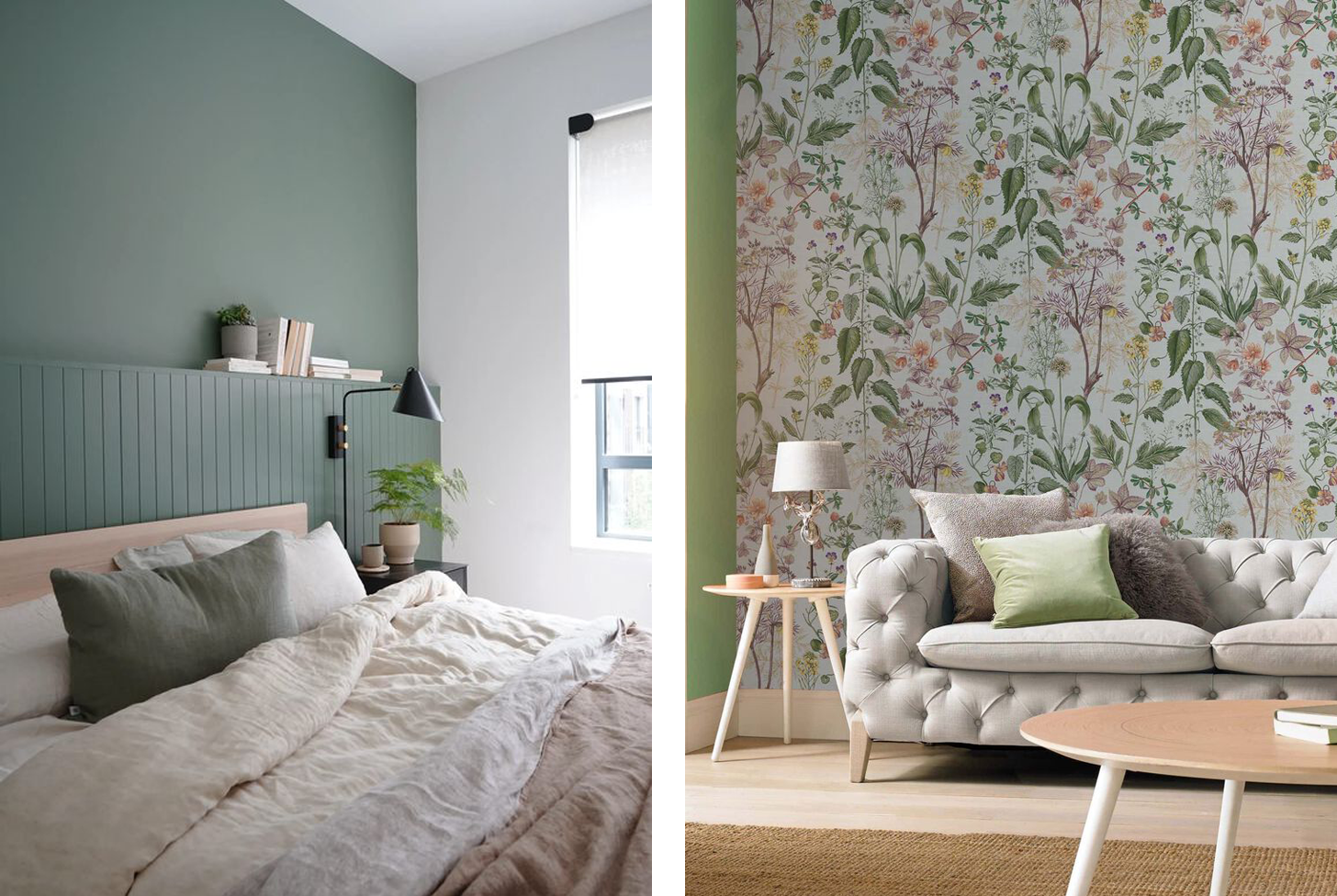How to use green in your home
I love using green in my interior design schemes, whether through accessories or paint colours, as it’s such a versatile colour. From barely-there greige greens, to deep emeralds, its range is vast and there’s a shade of green to go with pretty much anything.
Green can create a relaxing and calming effect, too, so it’s perfect for creating harmony in your home. It’s also the colour associated with nature, and with Spring heralding the return of swathes of green outside, what better time to bring a little of the outside in?
Read on for eight ideas on how to use green in your home.
Get green fingered
One of the simplest and cheapest ways to add green to your home is with the addition of some houseplants. Some easy-to-look-after plants include string of hearts, a peace lily, succulents and devil’s ivy. Not only do they look good, but real plants also have air-purifying qualities, so they’re beneficial to your health, too.
Images via Crocus and Bloom & Wild
Refresh your bedding
Update your bedroom in an instant with a brand new duvet set in a shade of green that complements your existing decor. If you prefer lighter colour schemes, go for muted, soft greens for a calming feel. If you’re more of a maximalist and like things dark, go bold with rich forest greens or deep teal.
Images via Secret Linen Store and Dunelm
Paint an item of furniture
Make a statement with an item of furniture by painting it a shade of green. Perfect for adding some fun to a child’s room, a painted chest of drawers or wardrobe immediately adds interest to a space without having to paint the entire room. Chalk paint is great for this, as you don’t need to sand or prime. (Frenchic Paint has a fantastic array of greens).
Images via Pinterest
Create a feature wall
Not so keen on a full green room, but want to add a touch of green somewhere? A feature wall in a shade of green is a simple way to achieve this. Go one step further and use patterned wallpaper with pops of green for added interest.
Images via Cate St Hill and Graham & Brown
Swap out your cushions
Switching up your cushions is a super easy way to transform your living space. Bring some nature into your home with some pretty green floral designs, or choose a solid green colour as the backdrop for layering up other cushions in contrasting or complementary shades.
Images via Next and Nordic House
Invest in a green sofa
If green cushions aren’t enough of a colour hit, go one step further and invest in a green sofa for a standout item in your living room. A rich forest-green sofa will pop against a deep-blue wall, whereas a paler green sofa works well with accents of blush pink for a more pared down look.
Images via Studio McGee and Pinterest
Paint your kitchen cupboards
Green kitchens are becoming the go-to shade right now, replacing the ever-popular navy blue. Thanks to its versatility, the many shades of green are popular in both traditional and contemporary kitchens. Go for muted, heritage shades of green, such as sage or olive, for a more traditional feel, or choose a rich forest green paired with brass hardware for a more contemporary look. (Read this handy Dulux guide to painting your kitchen cabinets if you want to give it a go.)
Tile your bathroom
Okay, so this last one isn’t an instant fix! But if you’re planning a bathroom renovation and can’t decide on tiles, how about introducing some green tiles into your design? Green bathrooms are set to be one of the biggest trends this year, but we’re not talking avocado green bathrooms of the 1970s. Think pretty mint green brick tiles and beautiful glossy Zellige tiles to create a soothing, spa-like space.
Images via Jade Lisa Interiors and Claybrook
P.S If you are in the process of renovating your bathroom and would like a little help from an interior designer, take a look at the bathroom design service I offer. Although I am based in Havant, Hampshire, this is a service that can be done remotely through virtual consultations. Drop me a message to find out more.








